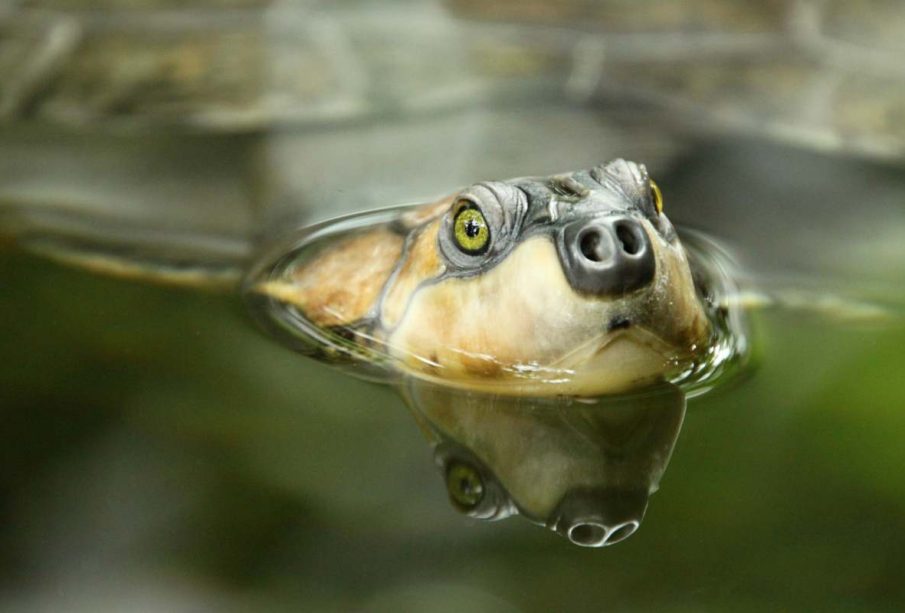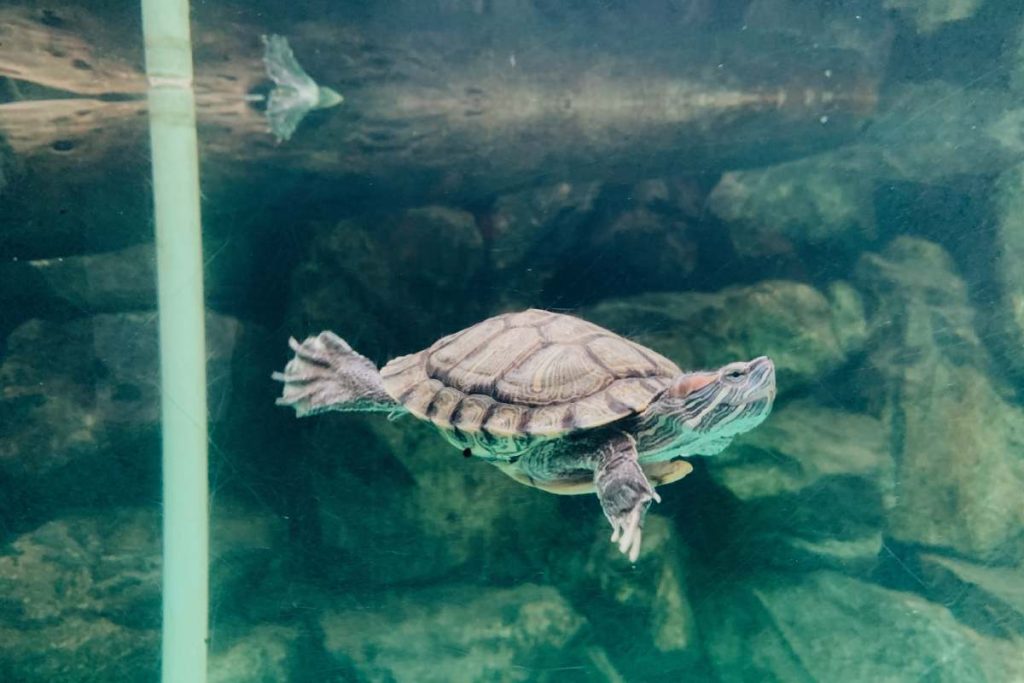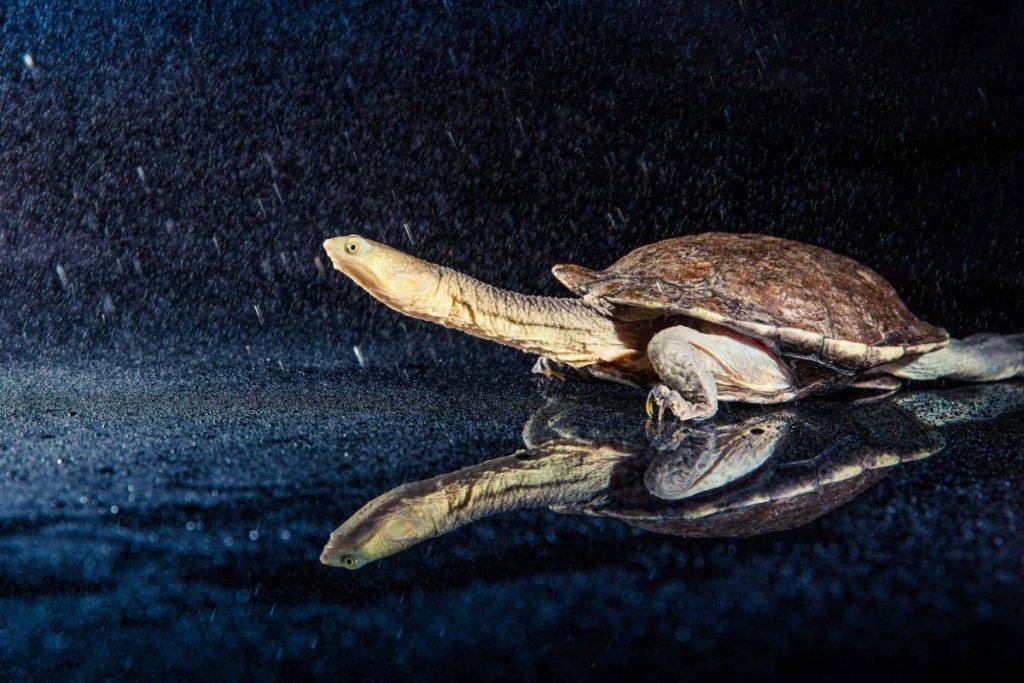
Australians are embracing new trends in pet ownership as they adapt to busier lives and smaller living spaces. With changing circumstances, many people are choosing alternative pets to love and nurture. Around 2% of Australians, approximately 364,000 people, own reptiles.
Turtles are the most popular, with 44% of reptile owners having a pet turtle. Notably, most reptile owners are in New South Wales, where 3% of households have a reptile compared to the 2% national average.
Can I have a turtle as a pet?
You can have a turtle as a pet, yes, but there are several important considerations to keep in mind before getting one:
Species Selection
- Common Pet Turtles: Popular pet turtles include the Red-Eared Slider, Painted Turtle, Box Turtle, and Russian Tortoise.
- Local Regulations: Check local laws and regulations regarding turtle ownership, as some species may be protected or restricted.
Habitat and Environment
- Enclosure: Turtles require a spacious tank or enclosure. Aquatic turtles need a water tank with a basking area, while terrestrial turtles need a dry habitat with proper substrate.
- Temperature and Lighting: Provide proper heating, UVB lighting, and a temperature gradient to maintain their health.
- Water Quality: For aquatic turtles, maintain clean water with a good filtration system.
Diet
- Balanced Nutrition: Feed a varied diet appropriate for the turtle species, including commercial turtle food, leafy greens, vegetables, and occasional protein like insects or fish.
- Supplementation: Use calcium supplements to support shell health, especially if the turtle is not getting sufficient UVB exposure.
Health and Maintenance
- Regular Cleaning: Clean the tank or enclosure regularly to prevent the buildup of waste and bacteria.
- Veterinary Care: Find a vet experienced with reptiles for regular check-ups and if any health issues arise.
- Observation: Monitor your turtle for signs of illness, such as changes in appetite, behavior, or physical appearance.
Commitment
- Longevity: Turtles can live for several decades, requiring a long-term commitment.
- Time and Effort: Caring for a turtle involves regular feeding, cleaning, and maintenance.
Ethical Considerations
- Captive-Bred vs. Wild-Caught: Opt for captive-bred turtles to support conservation efforts and avoid contributing to the decline of wild populations.
Legal and Safety Considerations
- Salmonella Risk: Turtles can carry Salmonella, so practice good hygiene, especially after handling the turtle or cleaning its habitat.

How to Care for a Pet Turtle
Taking care of a pet turtle requires some research and preparation. Here’s a simple guide to help beginners get started. Our licensed reptile outlet has a knowledgeable staff ready to answer any questions about keeping a pet turtle.
Habitat
Eastern Long-Necked and Short-Necked Turtles are commonly found in freshwater rivers, swamps, lakes, and billabongs. To replicate their natural habitat, you’ll need a specially designed turtle terrarium.
Terrarium Essentials
- Basking Area: Create a dry spot where your turtle can come out of the water to bask.
- Water Depth: Ensure the water is deep enough for your turtle to fully submerge and roll over.
- Water Quality: Clean water is crucial. Use a biological filtration system and perform regular water changes and tests every few weeks.
Lighting and Heating
- UVB Lighting: Special reptile lighting is necessary to provide UVA and UVB light. This helps turtles absorb calcium, essential for a strong shell.
- Basking Lamp: Place a warm basking lamp over the basking area to help your turtle warm up.
What is the best turtle to have as a pet in Australia?
In Australia, several turtle species are popular as pets due to their manageable care requirements and adaptability to captivity. The best pet turtles in Australia include:
1. Eastern Long-Necked Turtle (Chelodina longicollis)
- Habitat: Freshwater, preferring slow-moving rivers, lakes, and ponds.
- Size: Up to 25 cm in shell length.
- Diet: Omnivorous, feeding on insects, small fish, crustaceans, and aquatic plants.
- Care: Requires a spacious tank with both aquatic and basking areas, UVB lighting, and a good filtration system for clean water.

2. Murray River Turtle (Emydura macquarii)
- Habitat: Freshwater rivers and streams, particularly the Murray-Darling Basin.
- Size: Up to 30 cm in shell length.
- Diet: Omnivorous, eating aquatic plants, invertebrates, and fish.
- Care: Needs a large tank with clean water, basking spots, UVB lighting, and regular water changes.
3. Saw-Shelled Turtle (Myuchelys latisternum)
- Habitat: Freshwater rivers, streams, and lagoons, often in areas with a lot of vegetation.
- Size: Up to 25 cm in shell length.
- Diet: Omnivorous, feeding on insects, fish, and plant material.
- Care: Similar to other freshwater turtles, requiring a balanced diet, clean water, UVB lighting, and a basking area.
Important Considerations
- Licensing: In Australia, keeping native reptiles as pets often requires a license. Check with your local state or territory wildlife authority for specific regulations and licensing requirements.
- Captive-Bred: Always opt for captive-bred turtles from reputable breeders to ensure you are not impacting wild populations.
- Habitat Setup: Ensure you can provide an appropriate habitat with the necessary equipment, including a large tank, filtration system, heater, and UVB lighting.
- Veterinary Care: Find a vet experienced with reptiles for regular health checks and any medical issues that may arise.
State-Specific Recommendations
- New South Wales: The Eastern Long-Necked Turtle is particularly popular and well-suited to the climate and conditions in NSW.
- Queensland: Both the Eastern Long-Necked and Saw-Shelled Turtles are good choices.
- Victoria and South Australia: The Murray River Turtle is well-adapted to the cooler climates in these regions.
Selecting a native turtle species for your area and adhering to all legal and care guidelines can provide a rewarding pet ownership experience and support conservation efforts.

Is there any spiritual belief in owning a turtle?
Owning a turtle can be associated with various spiritual beliefs and symbolism across different cultures. Here are some of the common spiritual meanings and beliefs connected to turtles:
Longevity and Stability
- Symbol of Longevity: In many cultures, turtles are seen as symbols of long life due to their long lifespan.
- Stability and Endurance: Turtles are often associated with stability, endurance, and a steady, grounded approach to life. Their slow, deliberate movements reflect patience and persistence.
Protection and Security
- Protective Symbol: The turtle’s hard shell is viewed as a symbol of protection and security, shielding from harm and negative energies.
- Home and Shelter: Turtles carry their homes on their backs, symbolizing self-sufficiency and the idea that true security comes from within.
Wisdom and Knowledge
- Ancient Wisdom: Turtles are often seen as wise creatures, embodying ancient knowledge and understanding. They are considered as bearers of wisdom in many spiritual traditions.
- Connection to Earth: Turtles are connected to the Earth element, symbolizing a deep connection to nature and the physical world.
Cultural Beliefs
- Native American Traditions: Many Native American tribes regard the turtle as a symbol of Mother Earth, representing fertility, creation, and the nurturing aspect of nature.
- Eastern Philosophies: In Chinese culture, the turtle is one of the Four Sacred Animals, symbolizing longevity, stability, and endurance. In Feng Shui, turtle figurines are used to bring protection and good fortune.
- Hinduism: In Hindu mythology, the world is believed to rest on the back of a giant turtle, symbolizing the foundation of the universe and the support of life.
Personal Reflection
- Inner Peace and Patience: Turtles remind individuals to slow down, find inner peace, and approach life with patience and calmness.
- Life Journey: The turtle’s journey from land to water and back can symbolize life’s transitions and the journey of the soul through different phases.
Overall Symbolism
Owning a turtle can be a spiritual reminder of the importance of protection, patience, wisdom, and a deep connection to the natural world. These creatures embody qualities that many people aspire to incorporate into their lives.
How big can they grow and how long can they live?
Turtles can vary greatly in size and lifespan depending on the species. Here’s a general overview:
Size
- Eastern Long-Necked Turtle: Typically grows up to 25 cm (10 inches) in shell length.
- Murray River Turtle: Can reach up to 30 cm (12 inches) in shell length.
- Saw-Shelled Turtle: Usually grows up to 25 cm (10 inches) in shell length.
Lifespan
- Eastern Long-Necked Turtle: Can live up to 50 years or more in captivity with proper care.
- Murray River Turtle: Typically has a lifespan of 40-50 years in captivity.
- Saw-Shelled Turtle: Can live around 20-30 years, though some may live longer with excellent care.
Proper care, including a suitable habitat, diet, and regular veterinary check-ups, can significantly influence a turtle’s lifespan and health.










